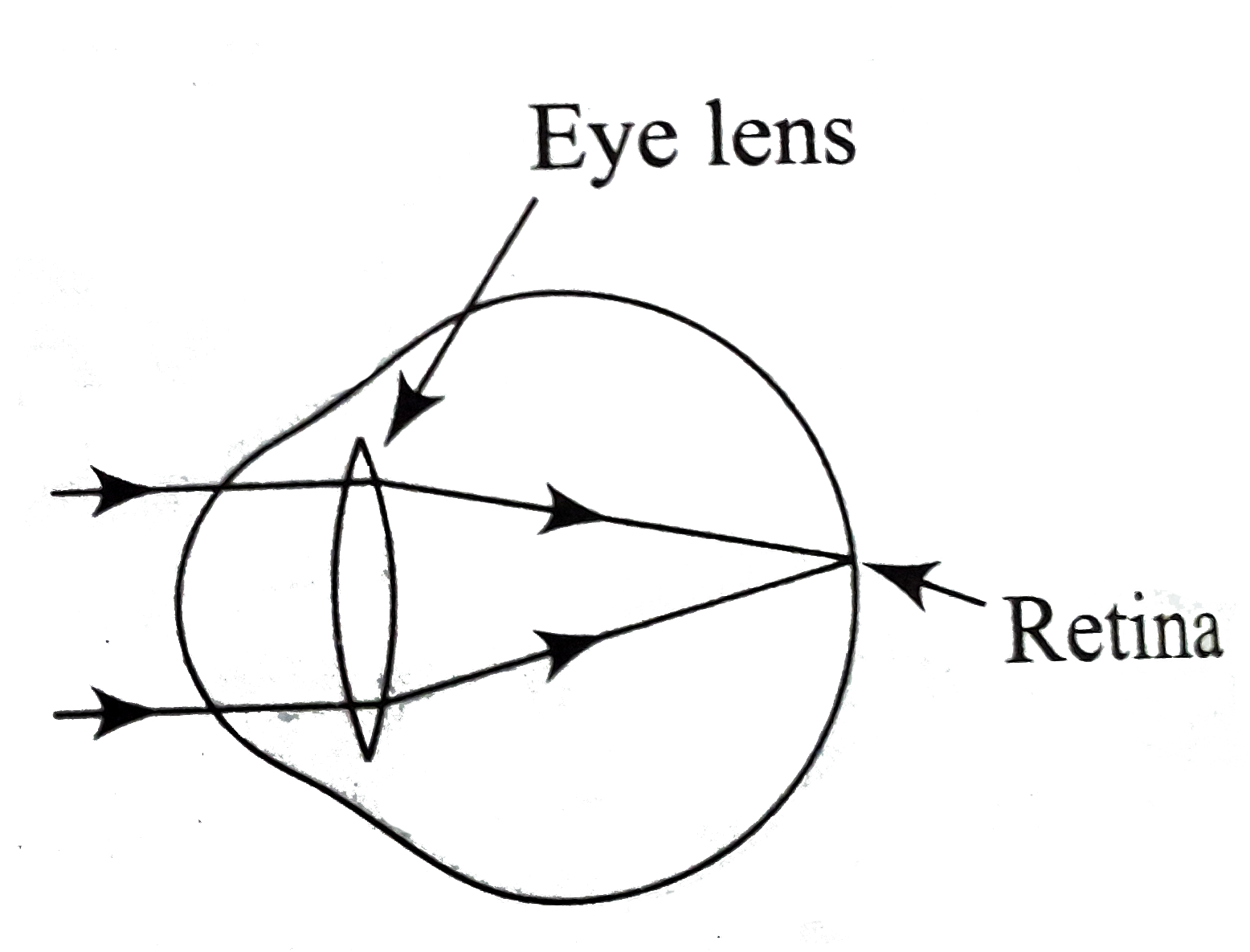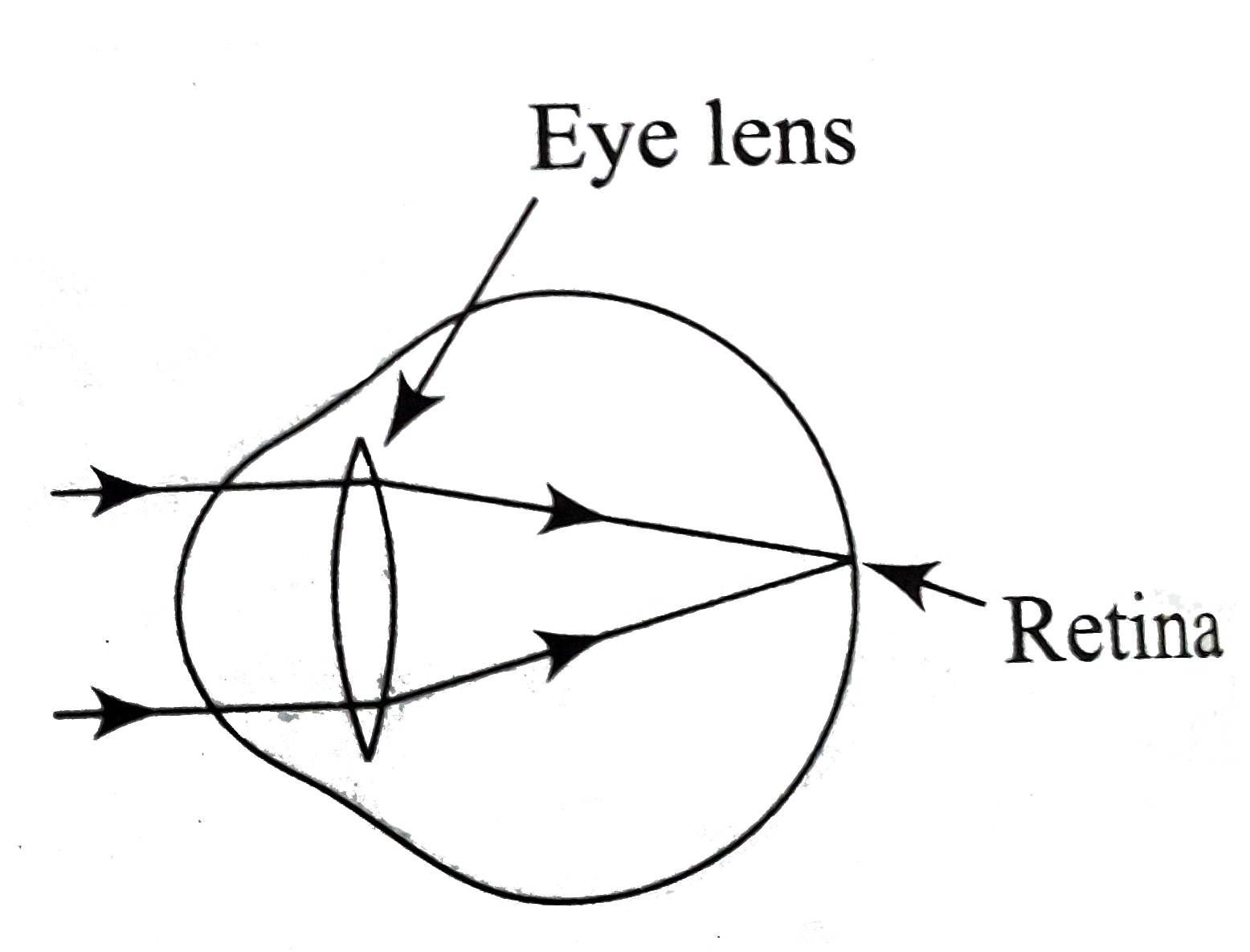Define the term power of accommodtion. Write the modification in the curvature of the
eye lens which enables us to see the nearby objects clearly.
Step-by-Step Solution:
1. Definition of Power of Accommodation:
- The power of accommodation refers to the ability of the eye's lens to adjust its focal length. This adjustment allows the eye to focus on objects at varying distances, ensuring that images are clearly projected onto the retina.
2. Function of the Eye Lens:
- The eye lens changes its shape to focus light rays coming from both distant and near objects. This is crucial for clear vision, as different distances require different focal lengths.
3. Modification in Curvature for Nearby Objects:
- To see nearby objects clearly, the ciliary muscles surrounding the lens contract. This contraction increases the curvature of the lens, making it thicker.
4. Result of Increased Curvature:
- The increased curvature of the lens allows it to bend light rays more sharply, which is necessary for focusing on objects that are close to the eye. This adjustment ensures that the light rays converge correctly on the retina, resulting in a clear image.
Final Answer:
- The power of accommodation is the ability of the eye's lens to adjust its focal length to focus light rays from both distant and nearby objects onto the retina. To see nearby objects clearly, the ciliary muscles contract, increasing the curvature and thickness of the lens.
---
- The power of accommodation refers to the ability of the eye's lens to adjust its focal length. This adjustment allows the eye to focus on objects at varying distances, ensuring that images are clearly projected onto the retina.
- The eye lens changes its shape to focus light rays coming from both distant and near objects. This is crucial for clear vision, as different distances require different focal lengths.
- To see nearby objects clearly, the ciliary muscles surrounding the lens contract. This contraction increases the curvature of the lens, making it thicker.
- The increased curvature of the lens allows it to bend light rays more sharply, which is necessary for focusing on objects that are close to the eye. This adjustment ensures that the light rays converge correctly on the retina, resulting in a clear image.
- The power of accommodation is the ability of the eye's lens to adjust its focal length to focus light rays from both distant and nearby objects onto the retina. To see nearby objects clearly, the ciliary muscles contract, increasing the curvature and thickness of the lens.
Similar Questions
How are we able to see nearby and also the distant objects clearly?
View SolutionWhich cells of the retina enable us to see coloured objects around us?
View SolutionDefine power of a lens and write its unit
View SolutionExplain the structure and functioning of human eye. How are we able to see nearby as well as distant objects?
View SolutionAn object is placed at a distance of 30 cm from a converging lens of focal length 15 cm. A normal eye (near point 25 cm, far point infinity) is placed close to the lens on the other side. (a) Can the eye see the object clearly? (b) What should be the minimum separation between the lens and the eye so that the eye can clearly see the object? c. Can a diverging lens, placed in contact with the converging lens, help in seeing the object clearly when the eye is close to the lens?
View SolutionDefine the term catalyst. Write one example where it is used.
View SolutionThe ciliary muscles of eye control the curvature of the lens in the eye and hence can alter the effective focal length of the system. When the muscles are fully relaxed, the focal length is maximum. When the muscles are strained, the curvature of lens increases. That means radius of curvature decreases and focal length decreases. For a clear vision, the image must be on the retina. The image distance is therefore fixed for clear vision and it equals the distance of retina from eye lens. It is about 2.5cm for a grown up person.
A perosn can theoretically have clear vision of an object situated at any large distance from the eye. The smallest distance at which a person can clearly see is related to minimum possible focal length. The ciliary muscles are most strained in this position. For an average grown up person, minimum distance of the object should be around 25cm.
A person suffering from eye defects uses spectacles (eye glass). The function of lens of spectacles is to form the image of the objects within the range in which the person can see clearly. The image o the spectacle lens becomes object for the eye lens and whose image is formed on the retina.
The number of spectacle lens used for th eremedy of eye defect is decided by the power fo the lens required and the number of spectacle lens is equal to the numerical value of the power of lens with sign. For example, if power of the lens required is +3D (converging lens of focal length 100/3cm ), then number of lens will be +3.
For all the calculations required, you can use the lens formula and lensmaker's formula. Assume that the eye lens is equiconvex lens. Neglect the distance between the eye lens and the spectacle lens.

Q. A person can see objects clearly from distance 10cm to ∞. Then, we can say that the person is
View SolutionSpecific cells of the retina enable us to see coloured objects around us. What are they?
View SolutionThe ciliary muscles of eye control the curvature of the lens in the eye and hence can alter the effective focal length of the system. When the muscles are fully relaxed, the focal length is maximum. When the muscles are strained, the curvature of lens increases. That means radius of curvature decreases and focal length decreases. For a clear vision, the image must be on the retina. The image distance is therefore fixed for clear vision and it equals the distance of retina from eye lens. It is about 2.5cm for a grown up person.
A perosn can theoretically have clear vision of an object situated at any large distance from the eye. The smallest distance at which a person can clearly see is related to minimum possible focal length. The ciliary muscles are most strained in this position. For an average grown up person, minimum distance of the object should be around 25cm.
A person suffering from eye defects uses spectacles (eye glass). The function of lens of spectacles is to form the image of the objects within the range in which the person can see clearly. The image o the spectacle lens becomes object for the eye lens and whose image is formed on the retina.
The number of spectacle lens used for th eremedy of eye defect is decided by the power fo the lens required and the number of spectacle lens is equal to the numerical value of the power of lens with sign. For example, if power of the lens required is +3D (converging lens of focal length 100/3cm ), then number of lens will be +3.
For all the calculations required, you can use the lens formula and lensmaker's formula. Assume that the eye lens is equiconvex lens. Neglect the distance between the eye lens and the spectacle lens.

Q. A far sighted man connot see objects clearly unless they are at least 100cm from his eyes. The number of the spectacle lenses that will make his range of clear vision equal to an average grown up person will be
View Solutiona man can see upto 100cm of the distant object. The power of the lens required to see far objects will be:
View Solution
